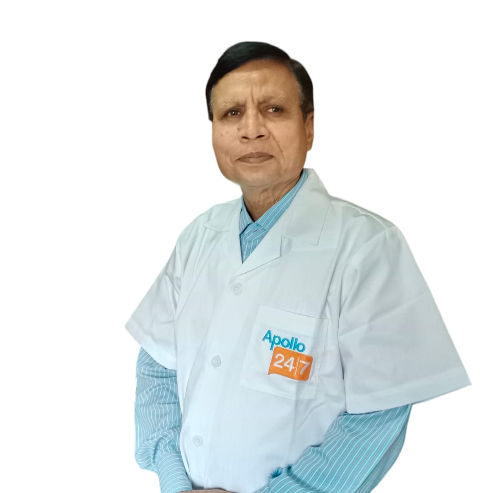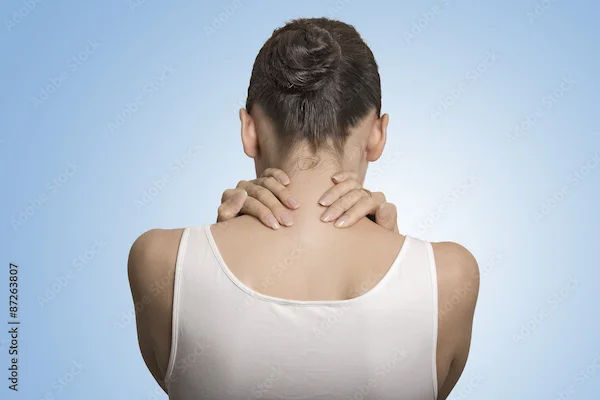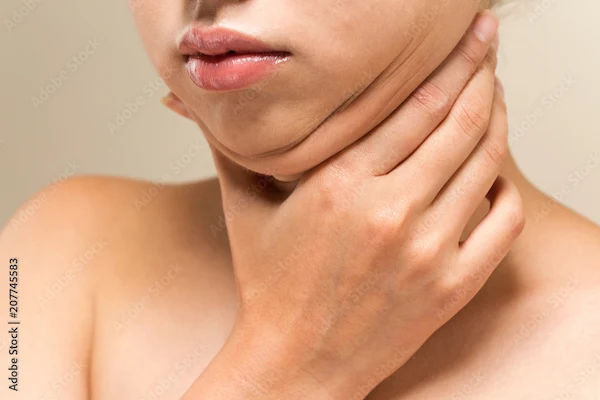How To Reduce Neck Hump?
Learn how to reduce neck hump naturally through posture correction, targeted exercises, and healthy habits. Discover simple steps to improve spinal health and boost your confidence.

Written by Dr.Sonia Bhatt
Last updated on 3rd Jul, 2025
.webp)
Introduction
A neck hump, also known as a "dowager’s hump" or "buffalo hump," is a noticeable bump at the base of the neck. It can be caused by poor posture, spinal issues, or certain medical conditions. While it may seem like just a cosmetic concern, a neck hump can lead to discomfort, stiffness, and even chronic pain if left unaddressed. The good news is that with the right approach, you can reduce or even prevent it.
Understanding Neck Hump
A neck hump develops when the upper spine curves excessively, causing fat or tissue to accumulate at the base of the neck. Common causes include:
1. Poor Posture – Slouching, hunching over phones or computers (text neck), and sitting for long hours without proper support.
2. Osteoporosis – Weak bones can lead to spinal compression, creating a hump.
3. Cushing’s Syndrome – A hormonal disorder that causes fat deposits on the upper back and neck.
4. Obesity – Excess weight can contribute to fat buildup in this area.
5. Ageing – Loss of muscle strength and spinal degeneration can worsen posture over time.
Symptoms to Watch For
Here are some signs that may indicate the presence of a neck hump:
A visible bump at the base of the neck
Neck and shoulder stiffness
Headaches
Limited neck mobility
Pain in the upper back
Consult Top Specialists for Your Symptoms
How to Reduce Neck Hump
Let's explore effective ways to manage and reduce a neck hump naturally.
1. Improve Your Posture
Good posture is key to preventing and reducing a neck hump.
Sit Straight: Keep your back aligned against the chair, your shoulders relaxed, and your chin parallel to the floor.
Stand Tall: Imagine a string pulling your head upwards, keeping your spine straight.
Adjust Your Workspace: Raise your computer screen to eye level to avoid slouching.
2. Neck & Shoulder Exercises
Strengthening and stretching exercises can help correct posture and reduce the hump.
Chin Tucks
Sit or stand straight.
Gently tuck your chin towards your chest without bending your neck.
Hold for 5 seconds, then release.
Repeat 10 times.
Shoulder Blade Squeeze
Sit or stand with your arms at your sides.
Squeeze your shoulder blades together as if holding a pencil between them.
Hold for 5 seconds and release.
Repeat 10 times.
Upper Back Stretch
Clasp your hands behind your head.
Gently push your elbows back while arching your upper back slightly.
Hold for 10 seconds, then relax.
3. Strengthen Your Core
A strong core supports your spine and improves posture. Try:
Planks
Yoga poses like Cat-Cow and Cobra
Pilates
4. Lifestyle Changes
Simple adjustments to your daily routine can have a lasting impact.
Stay Active: Regular movement prevents stiffness.
Limit Screen Time: Take breaks from phones and laptops.
Sleep Right: Use a supportive pillow to keep your neck aligned.
5. Healthy Diet & Weight Management
Nourish your body to support bone and spinal health.
Calcium & Vitamin D: Support bone health by consuming dairy and leafy greens, and getting exposure to sunlight.
Anti-inflammatory Foods: Help reduce stiffness by including turmeric, ginger, and omega-3-rich foods in your diet.
Hydration: Maintains spinal disc health by staying well-hydrated throughout the day.
6. Medical Treatments (If Needed)
If your neck hump is due to a medical condition (like osteoporosis or Cushing’s syndrome), consult a doctor. Treatments may include:
Physical therapy
Hormone therapy
Posture-correcting braces
When to See a Doctor
Consult a medical professional if you experience:
Severe pain
Numbness in arms
Sudden hump growth
Difficulty moving your neck
Final Thoughts
A neck hump can often be managed with posture correction, targeted exercises, and healthy lifestyle changes. Small, consistent efforts can lead to noticeable improvements over time. If your symptoms persist or worsen, seeking guidance from a healthcare provider is important.
Book a consultation with an expert on Apollo 24|7 for personalised advice. Stay proactive and support your spinal health for a pain-free life.
Consult Top Orthopaedicians
Consult Top Specialists for Your Symptoms

Dr. Manoj Dinkar
Orthopaedician
15 Years • MBBS, Dip (Orthopaedics)
New Delhi
THE DOCTORS NESST, New Delhi
Dr. Girimahesh Yadav
Orthopaedician
14 Years • MBBS, DNB Orthopedics
Nellore
ENEL Hospitals, Nellore
Dr. Sakthi Annamalai Chandranath
Orthopaedician
9 Years • MBBS., D.ortho.,
Madurai
A.C.Hospital, Madurai

Dr. Anindya Dutt
Orthopaedician
7 Years • MBBS, DNB (Orthopaedics), Fellowship in Joint Replacement, Fellowship in Paediatric Orthopaedics
Kolkata
Dr Anindya Dutt's Clinic, Kolkata

Dr. Padam Singh Gautam
General Physician/ Internal Medicine Specialist
43 Years • M.B.B.S (WARDHA M. S.), F.A.G.E. (MANIPAL), F.A.I.M.S. (Pb.), M.A.I.M.S. (Pb.), M.R.S.H. (LONDON)
Noida
Dr Padam Singh Gautam Fracture Clinic, Noida
(225+ Patients)
Consult Top Orthopaedicians

Dr. Manoj Dinkar
Orthopaedician
15 Years • MBBS, Dip (Orthopaedics)
New Delhi
THE DOCTORS NESST, New Delhi
Dr. Girimahesh Yadav
Orthopaedician
14 Years • MBBS, DNB Orthopedics
Nellore
ENEL Hospitals, Nellore
Dr. Sakthi Annamalai Chandranath
Orthopaedician
9 Years • MBBS., D.ortho.,
Madurai
A.C.Hospital, Madurai

Dr. Anindya Dutt
Orthopaedician
7 Years • MBBS, DNB (Orthopaedics), Fellowship in Joint Replacement, Fellowship in Paediatric Orthopaedics
Kolkata
Dr Anindya Dutt's Clinic, Kolkata

Dr. Padam Singh Gautam
General Physician/ Internal Medicine Specialist
43 Years • M.B.B.S (WARDHA M. S.), F.A.G.E. (MANIPAL), F.A.I.M.S. (Pb.), M.A.I.M.S. (Pb.), M.R.S.H. (LONDON)
Noida
Dr Padam Singh Gautam Fracture Clinic, Noida
(225+ Patients)


